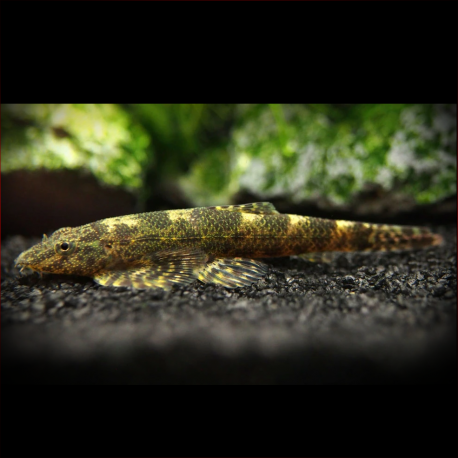More info
Datasheet
| Minimum Tank Size | 40 litres / 10.57 US gallons |
| Maximum Size | 4.0cm / 1.57inches |
| Temperature | 20°C / 68.00°F - 25.5°C / 77.90°F |
| Hardness | 1.01dgH / 18ppm - 12.05dgH / 215ppm |
| pH | 6.0-7.5 |
General Description
Homalopteroides Tweediei, commonly known as Tweedie's Homalopteroides, is a small fish species belonging to the family Balitoridae. It is often mistaken with H. smithi. Described as having whitish coloration with distinct brown markings and blotches, this species typically grows up to 4.0 cm in length. Known for its specialized morphology suited for life in fast-flowing waters, they are sometimes referred to as "lizard" or "gecko" loaches.
Aquarium Setup
The aquarium setup for H. tweediei should include clean, well-oxygenated water with a turnover of 10-15 times per hour. Utilizing an oversized filter, powerheads, and airstones can help achieve the desired flow and oxygen levels. Substrates like gravel, sand, or a mixture of both, along with water-worn rocks, driftwood, and aquatic plants like Microsorum and Anubias spp., are recommended. Stability in water conditions is crucial for the health of this species, thus requiring a mature tank environment.
Behaviour
Known to live in aggregations in the wild, H. tweediei is not aggressive but has specific tankmate requirements. It interacts interestingly with conspecifics, displaying bolder behaviors when kept in groups of six or more. When housed alone or in smaller numbers, they tend to be less adventurous. Some harmless squabbles may occur with certain compatible species, so proper research on tankmate selection is advised.
Feeding and Diet
In their natural habitat, Homalopteroides species are micropredators feeding on small crustaceans, insect larvae, and other invertebrates. In captivity, they may accept sinking dried foods, but a diet rich in live or frozen foods like Daphnia, Artemia, and bloodworms is essential to maintain good health. Balitorids are often seen in emaciated states in pet stores, requiring a consistent and suitable food source for recovery.
Reproduction & Dimorphism
There is little documented information on the reproductive behavior of H. tweediei in aquarium settings. In the wild, they are presumed to be seasonal spawners. Sexually mature females are slightly larger and fuller-bodied than males, indicating sexual dimorphism in this species.
Habitat and Distribution
Homalopteroides Tweediei is found in moderately flowing zones of clear, oxygen-rich streams with vegetation patches. Their natural habitat includes shallow rapid creeks in Johor, Peninsular Malaysia, and parts of Southeast Asia. They have been recorded in various river basins in Indonesia, Thailand, Laos, Cambodia, and Vietnam, inhabiting waters alongside other fish species like Rasbora, Acanthopsoides, and Pangio.

